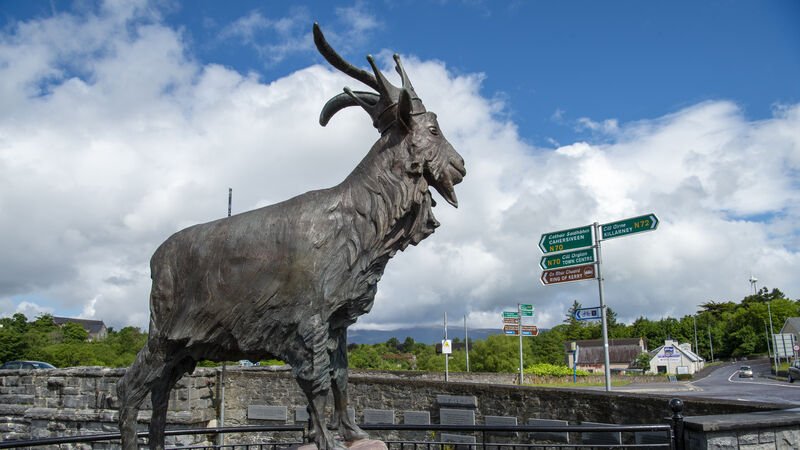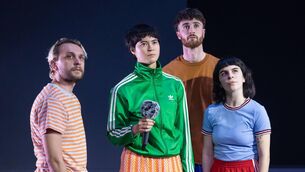Munster in 30 Artworks: No. 13 - Alan Ryan Hall’s King Puck in Killorglin

The King Puck in Killorglin, Co Kerry. Picture Dan Linehan
Puck Fair in Killorglin, County Kerry has the distinction of being one of Ireland’s oldest festivals. How old exactly is not known, but King James I granted a charter to the existing fair in 1613, and even then it was regarded as an ancient tradition.
Each year, weeks before the festival begins, a party of locals capture a wild he-goat in the mountains. On Gathering Day — usually August 10 — the goat is paraded through the town before being crowned King Puck by a local girl selected as Queen Puck for the occasion. The King is then raised onto a 52-foot pedestal, to afford him a better view of the wheeling and dealing in cattle and horses on Fair Day, along with the general shenanigans one might expect of as many 80,000 revellers before they disperse again on Scattering Day. After these three hectic days, Puck is relieved of his crown and released back into the wild.







